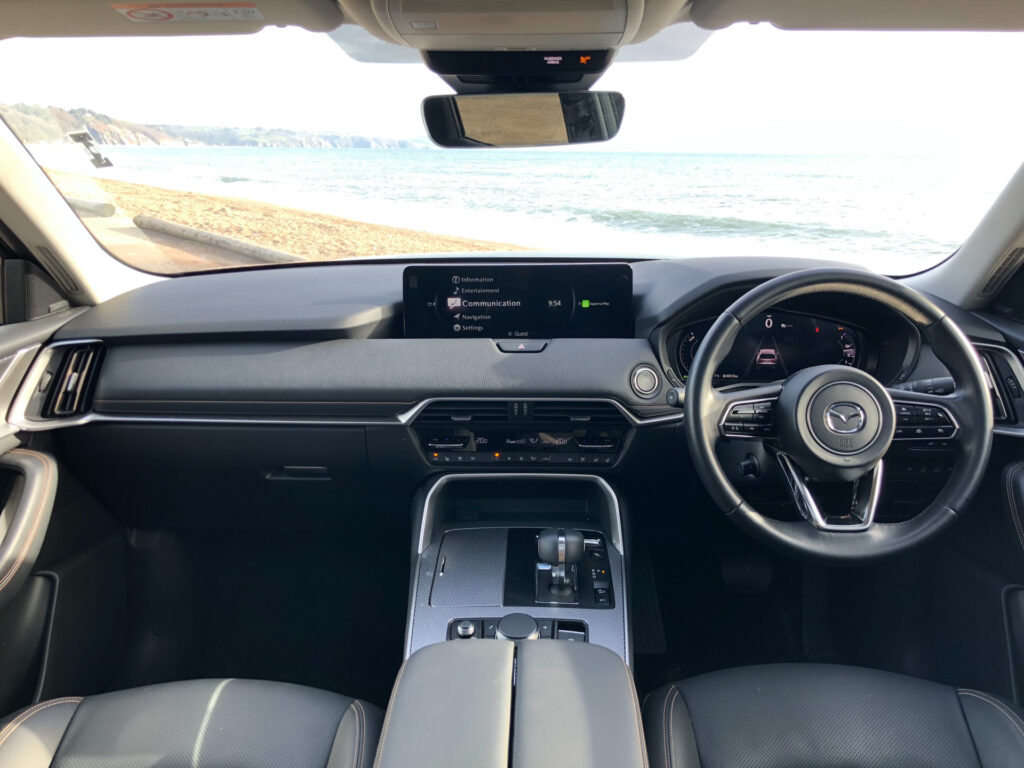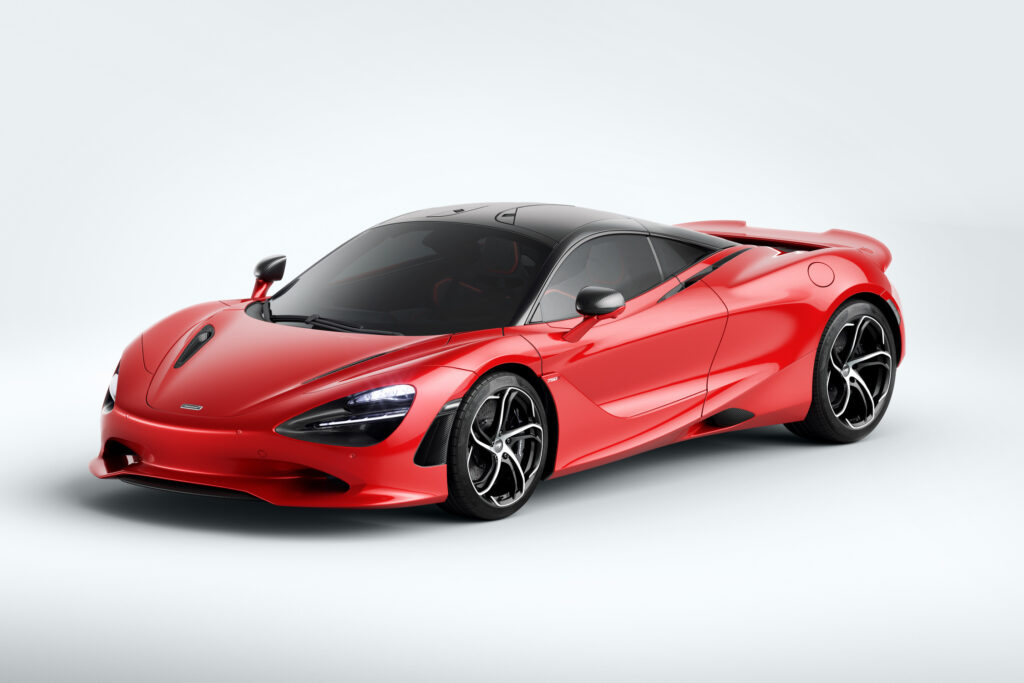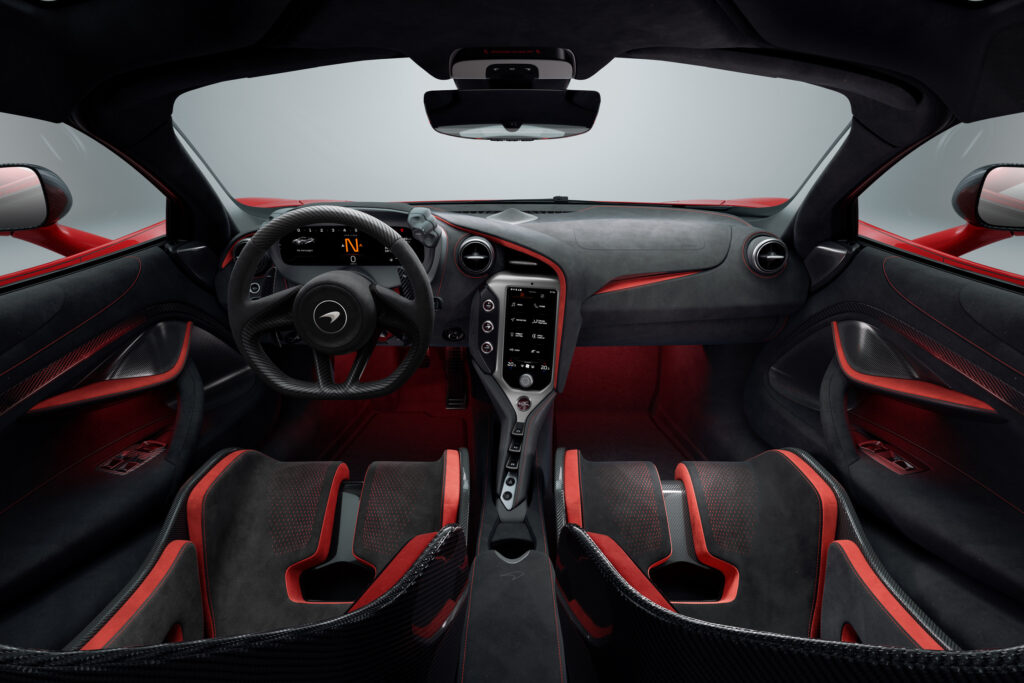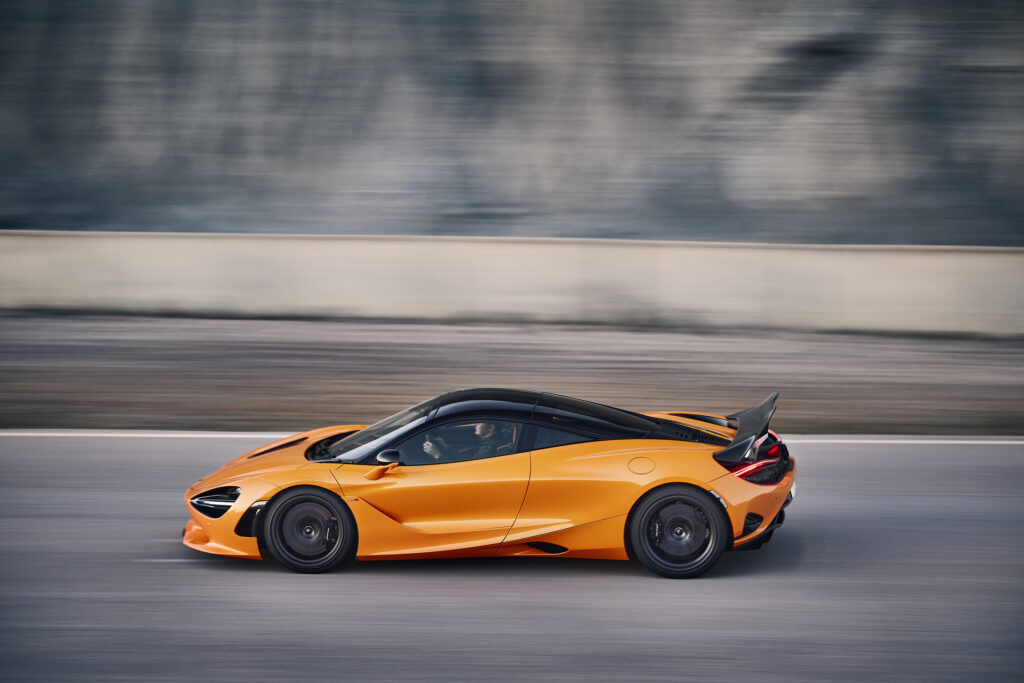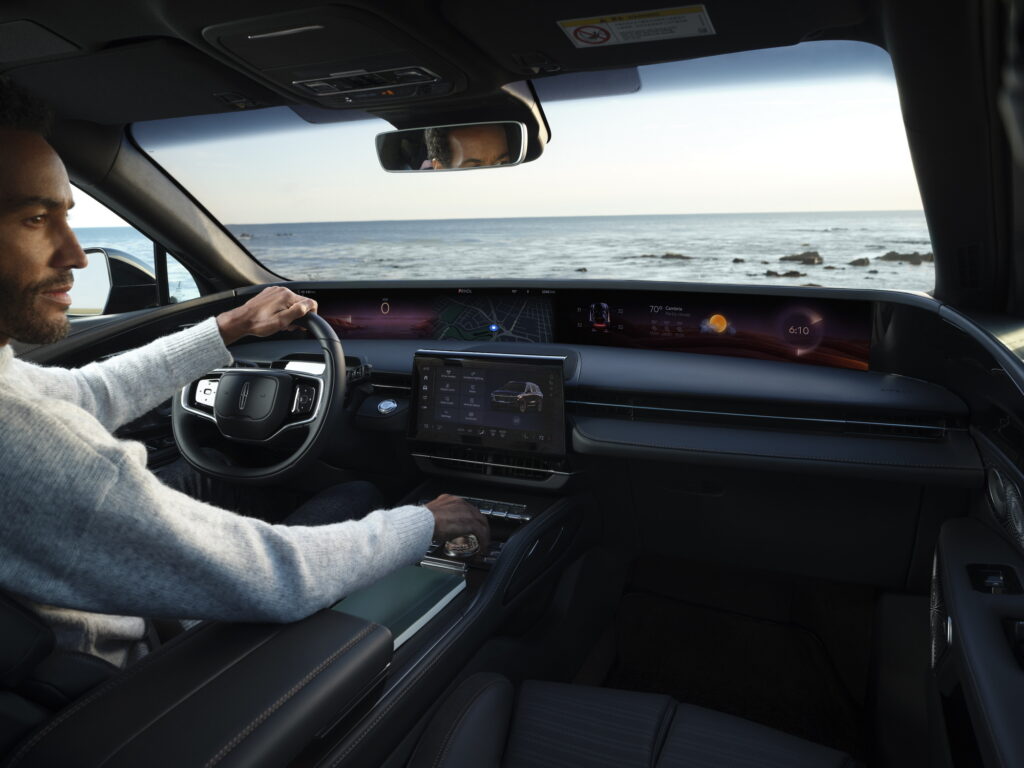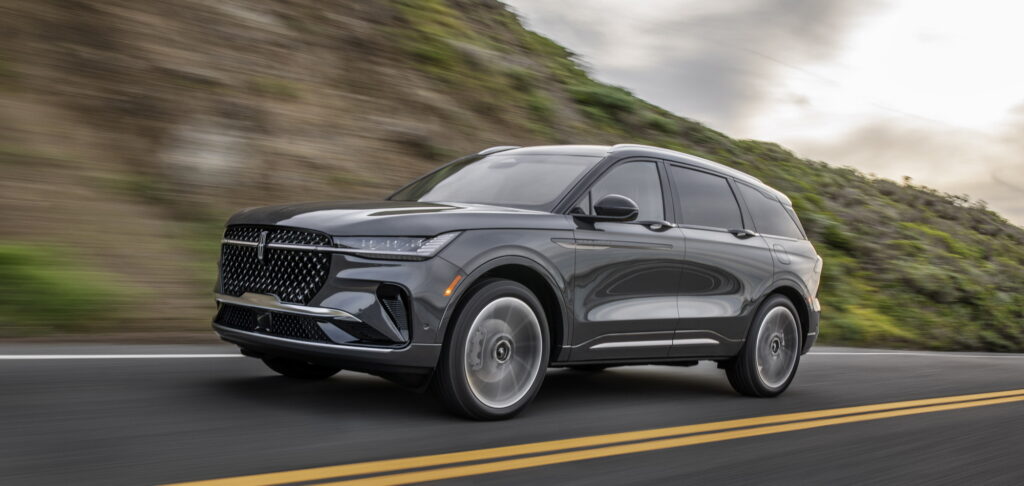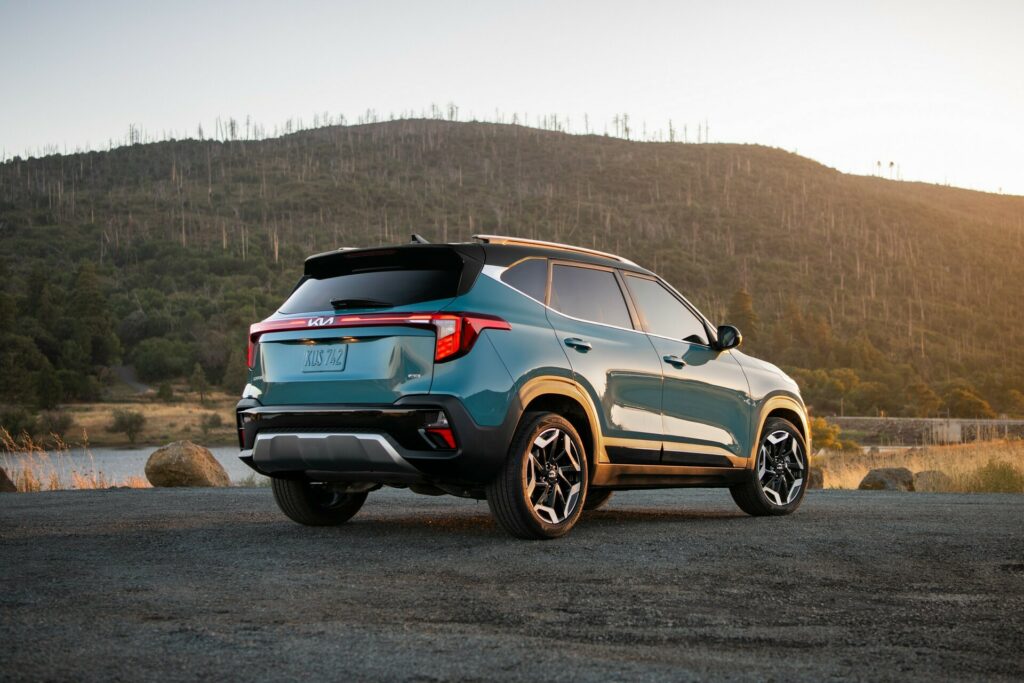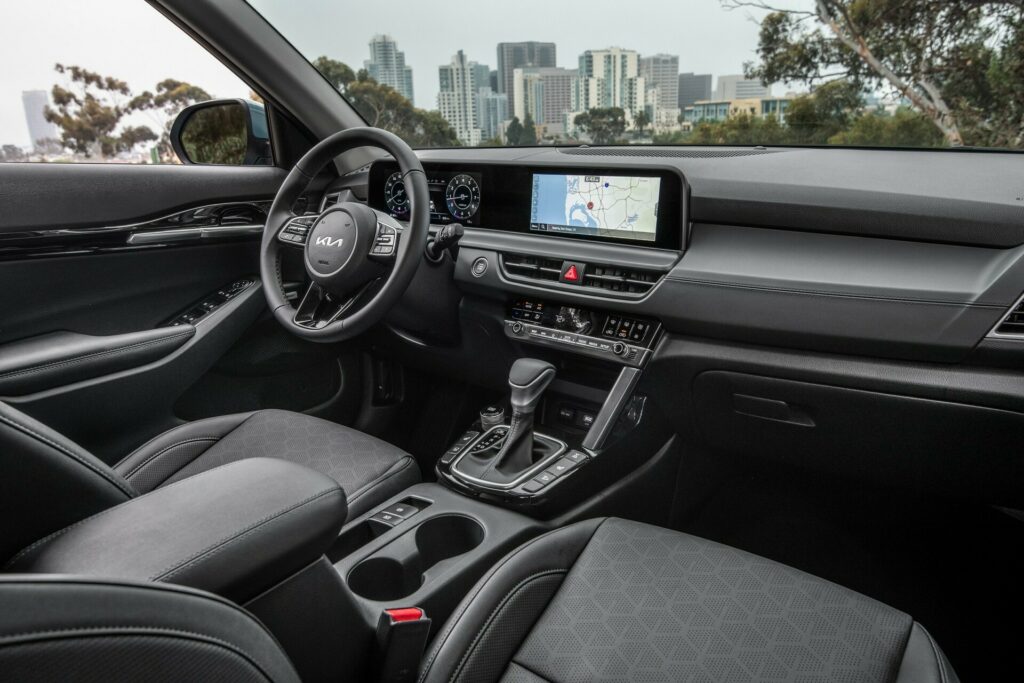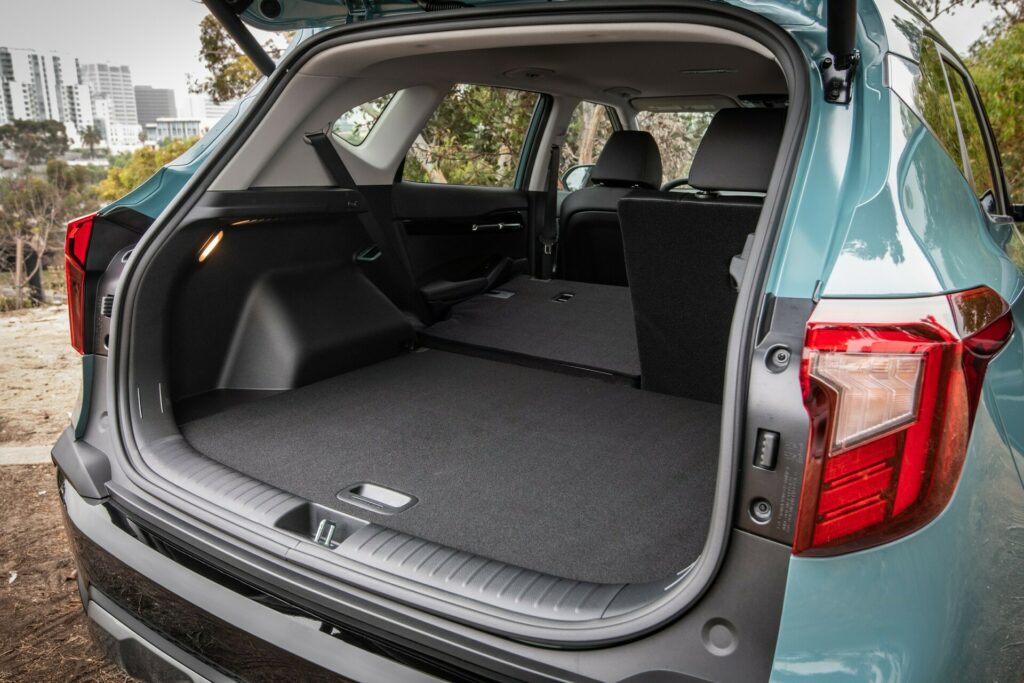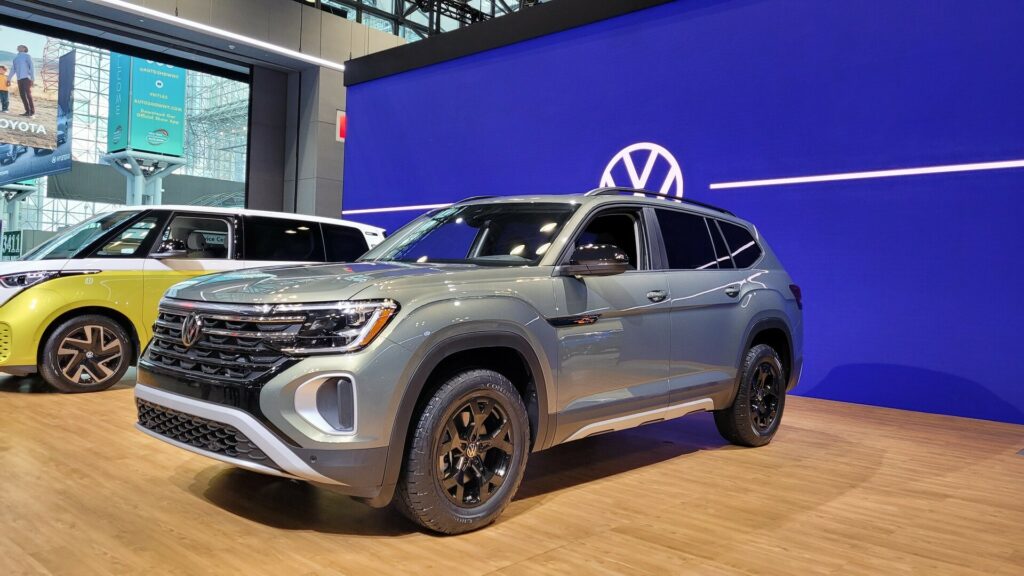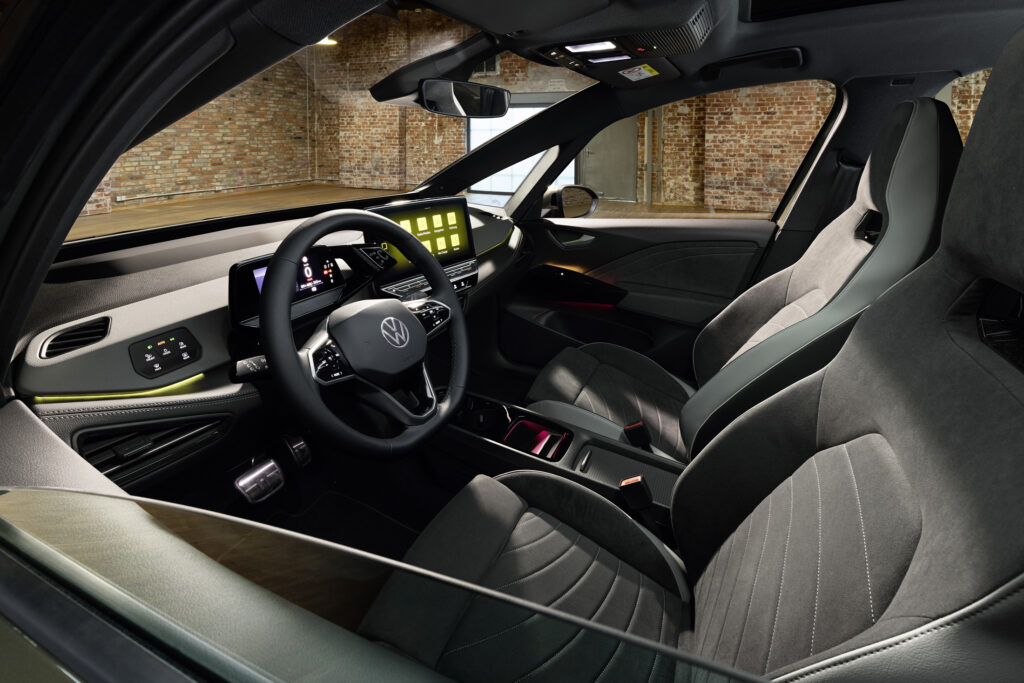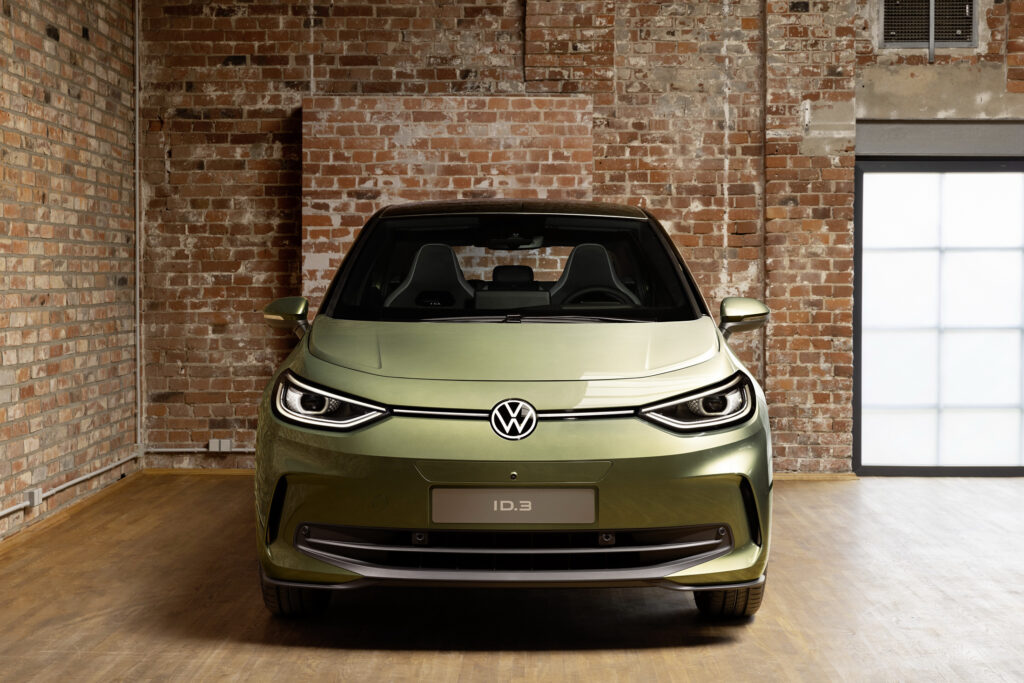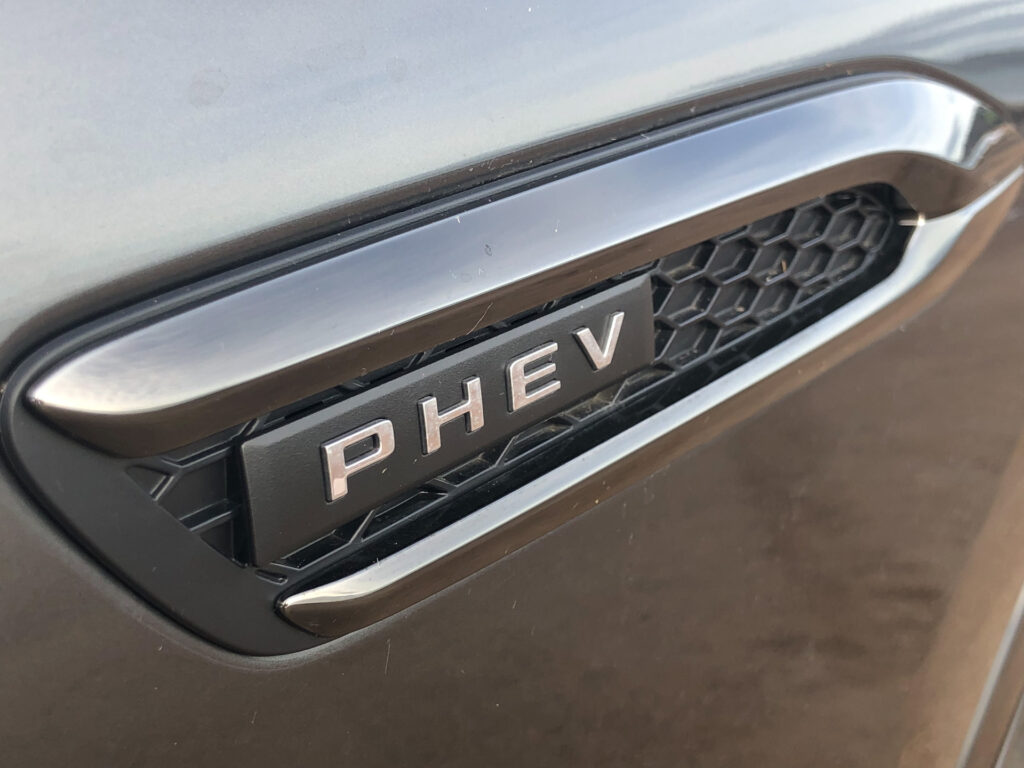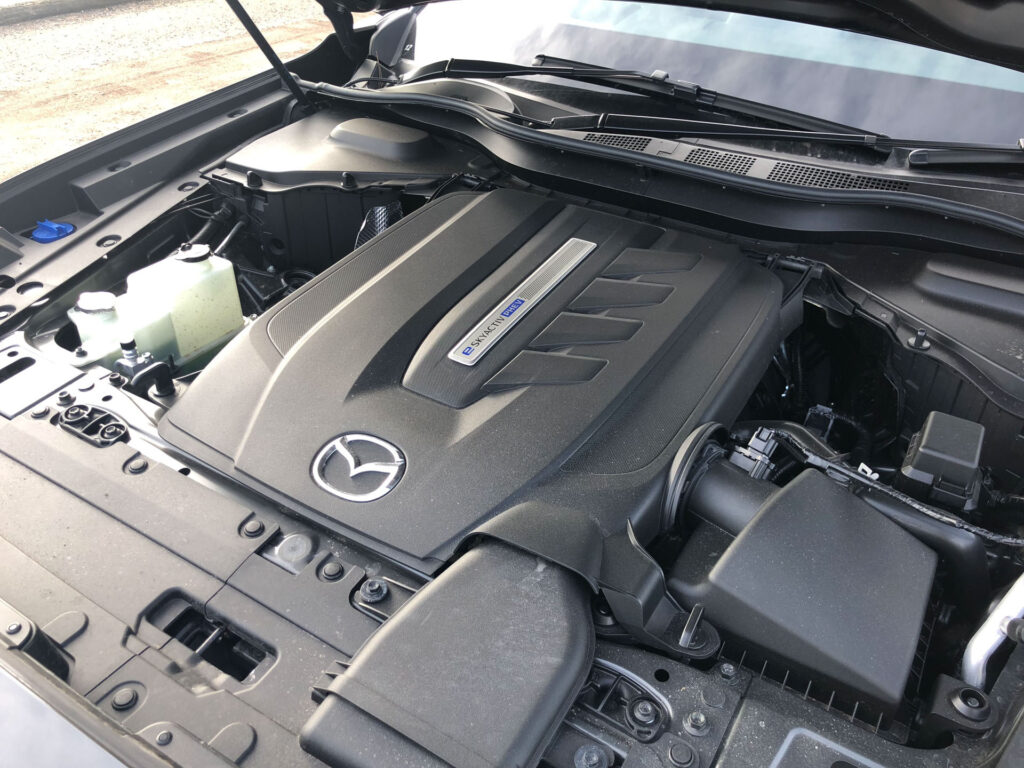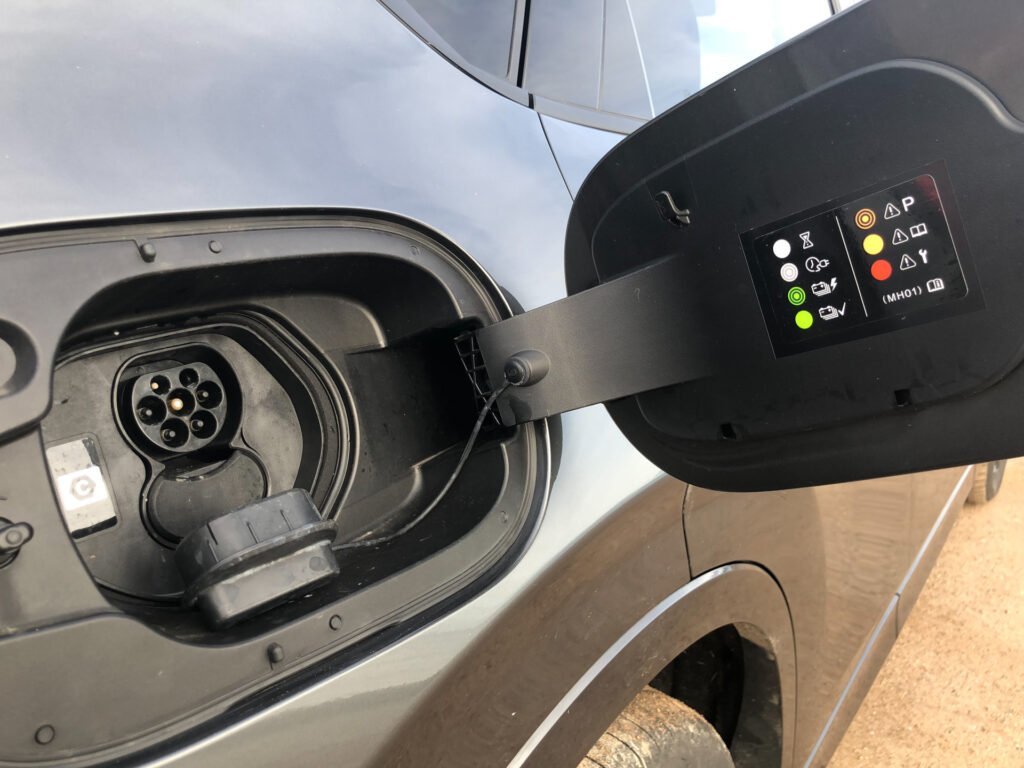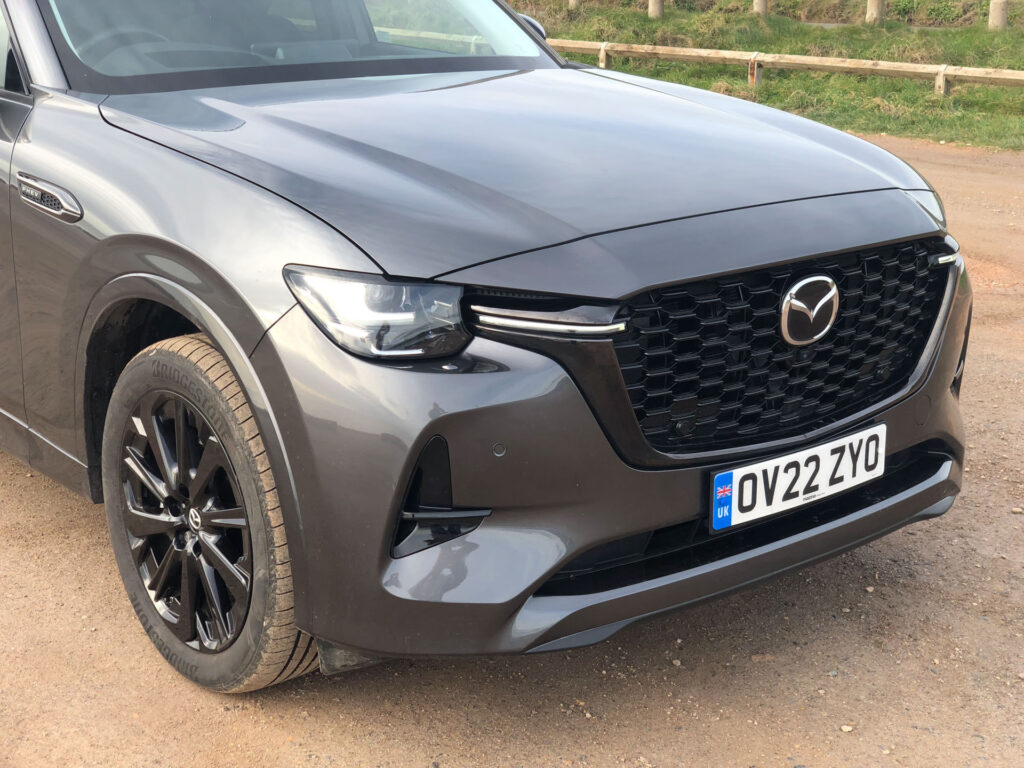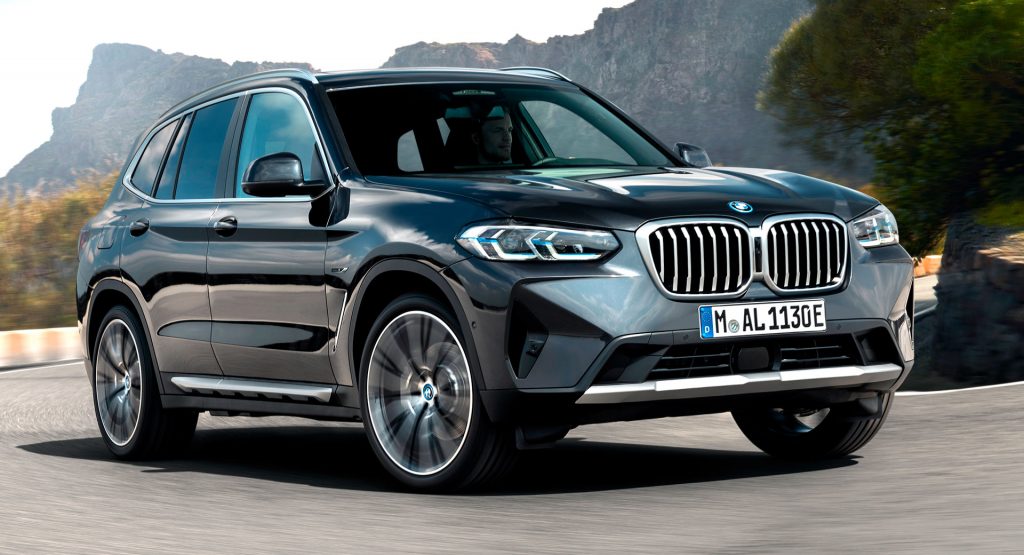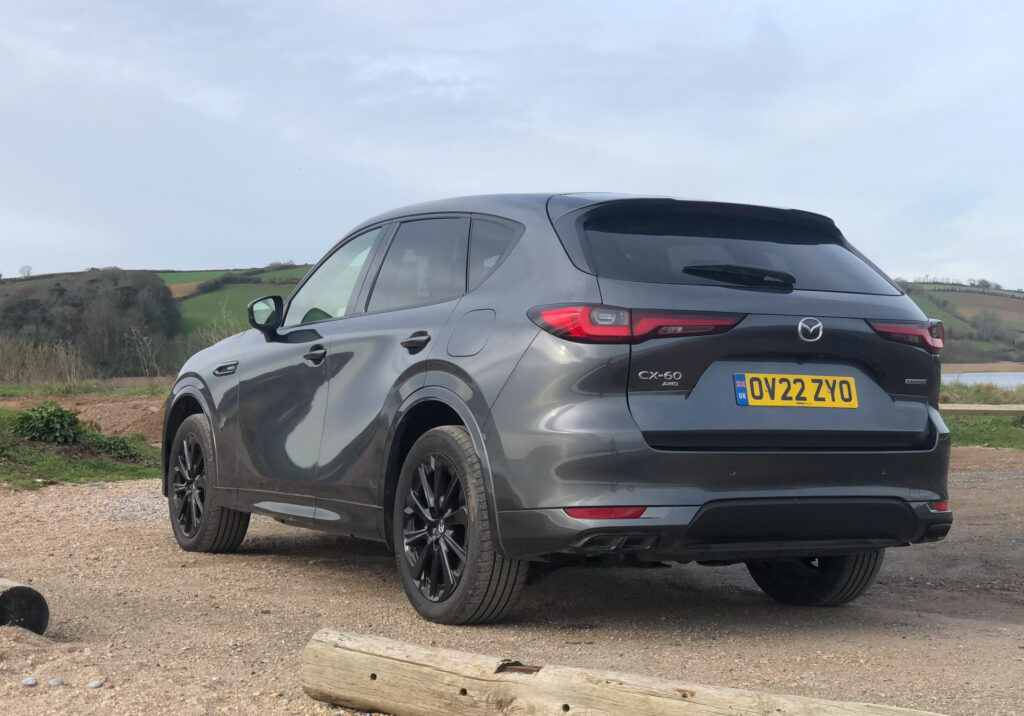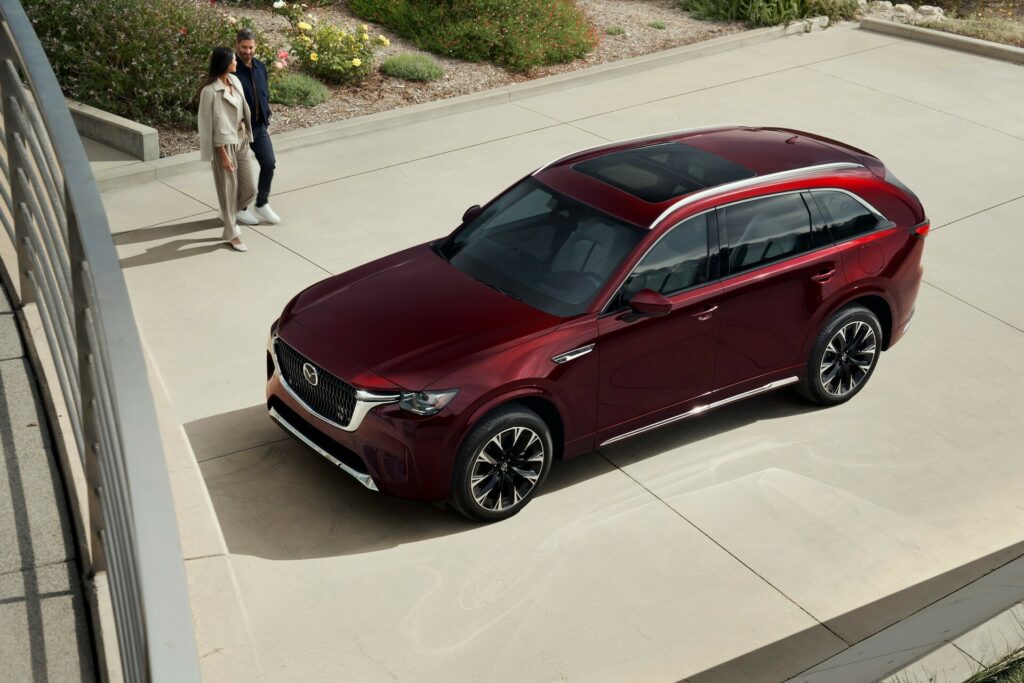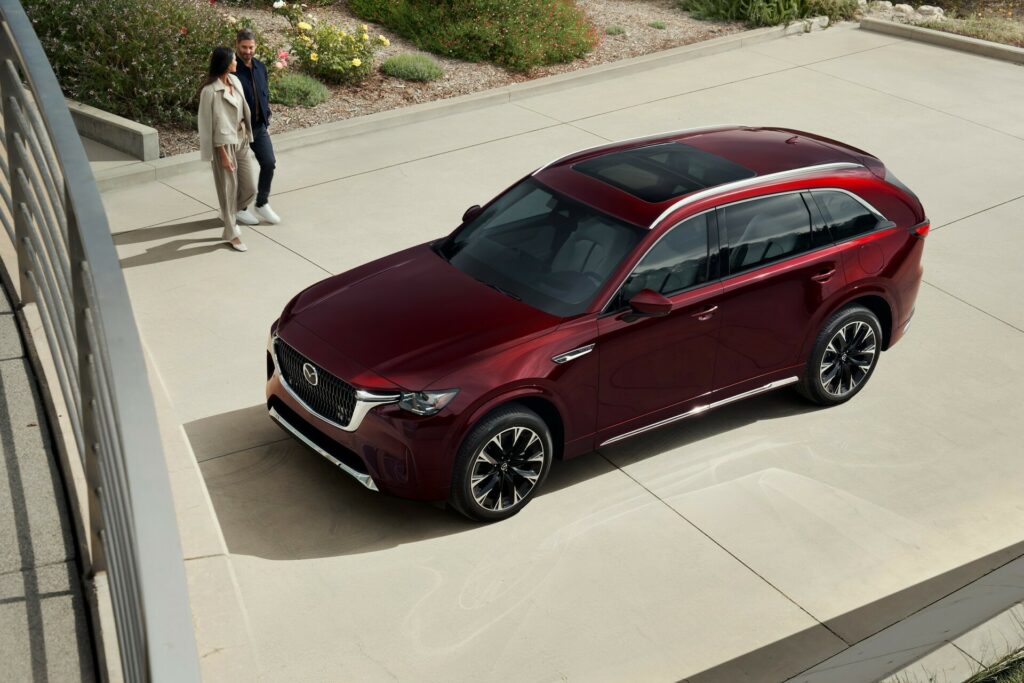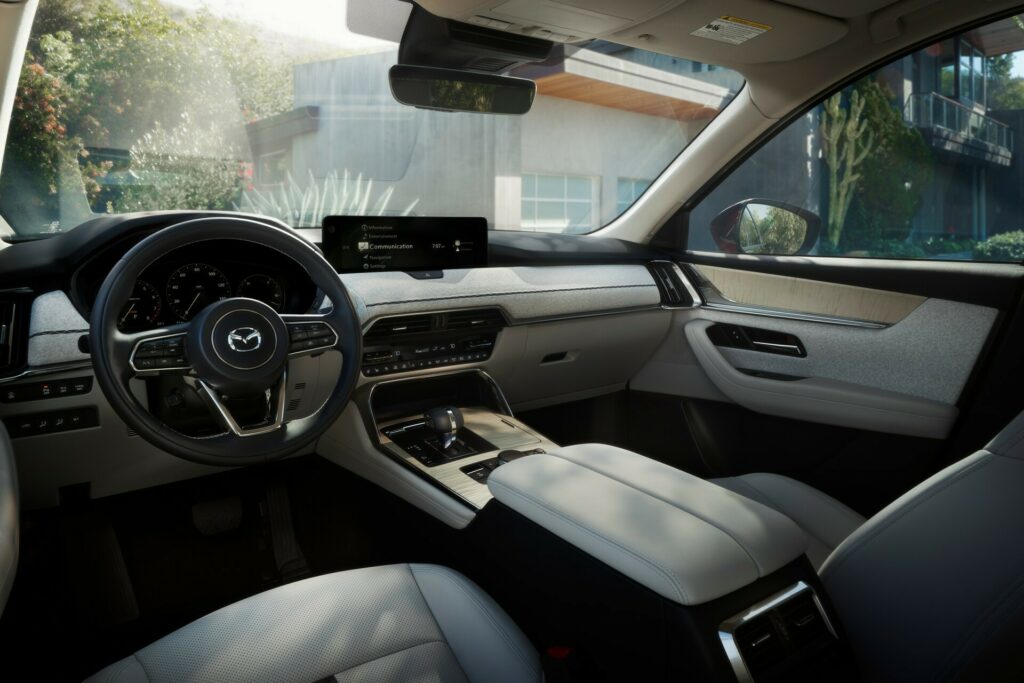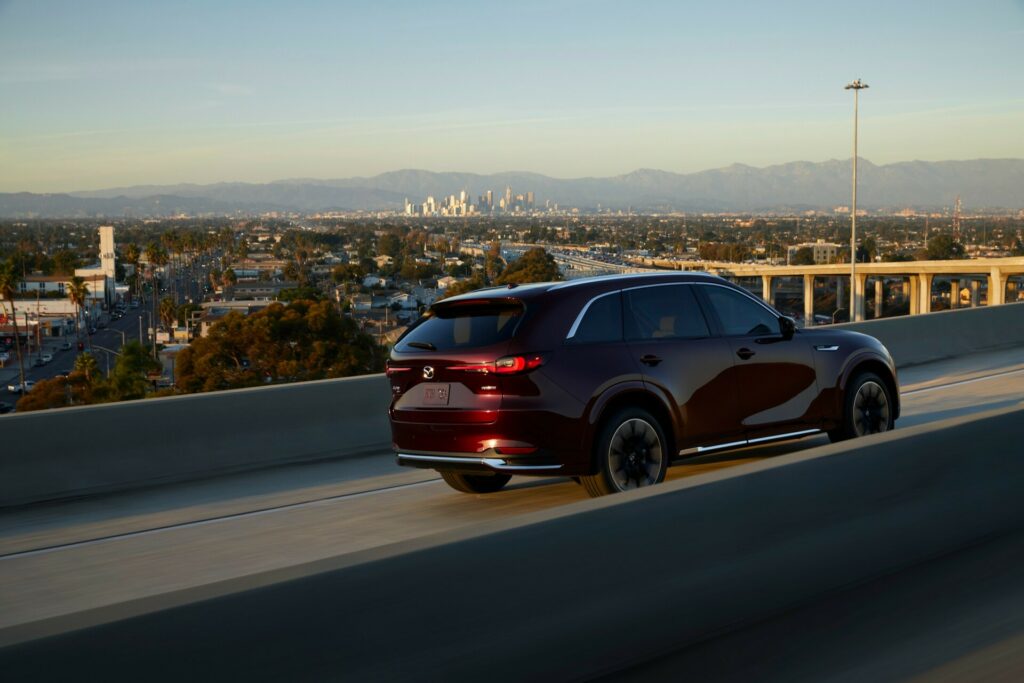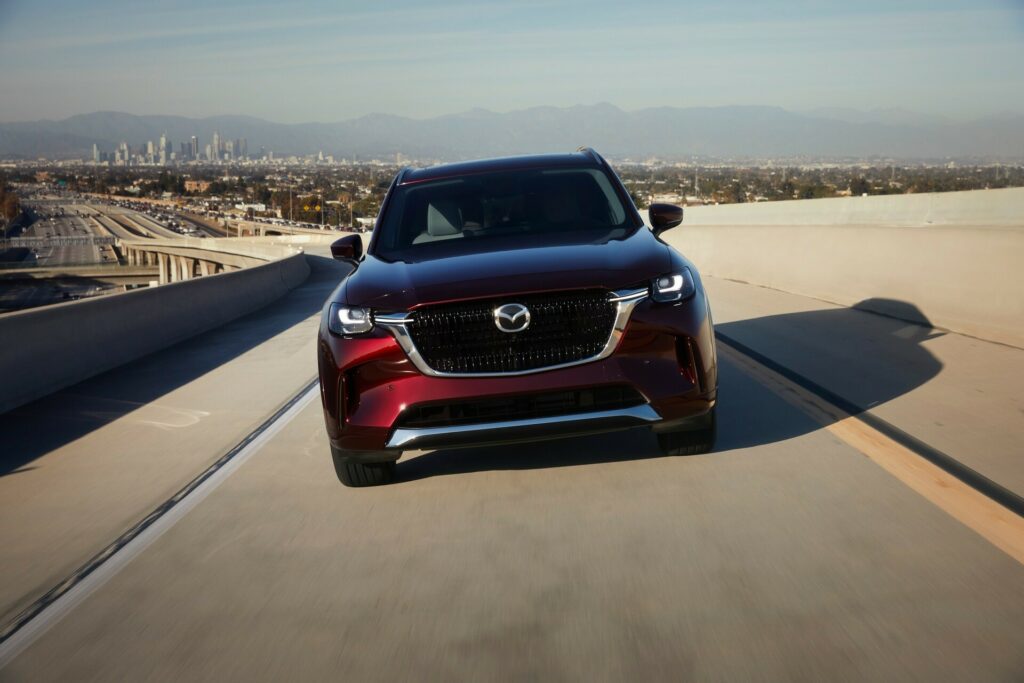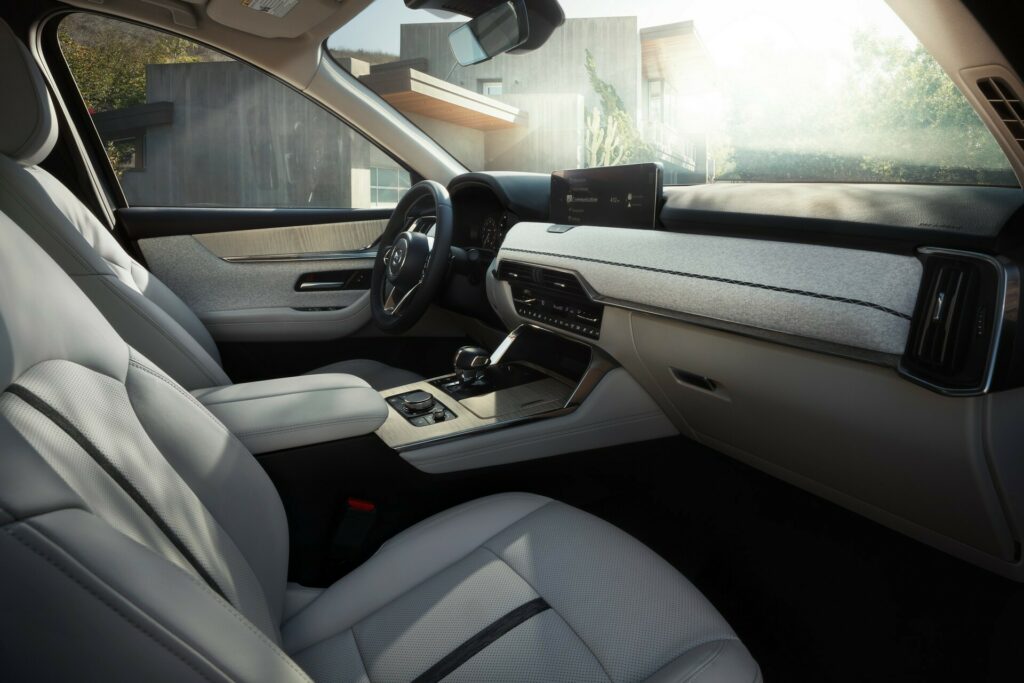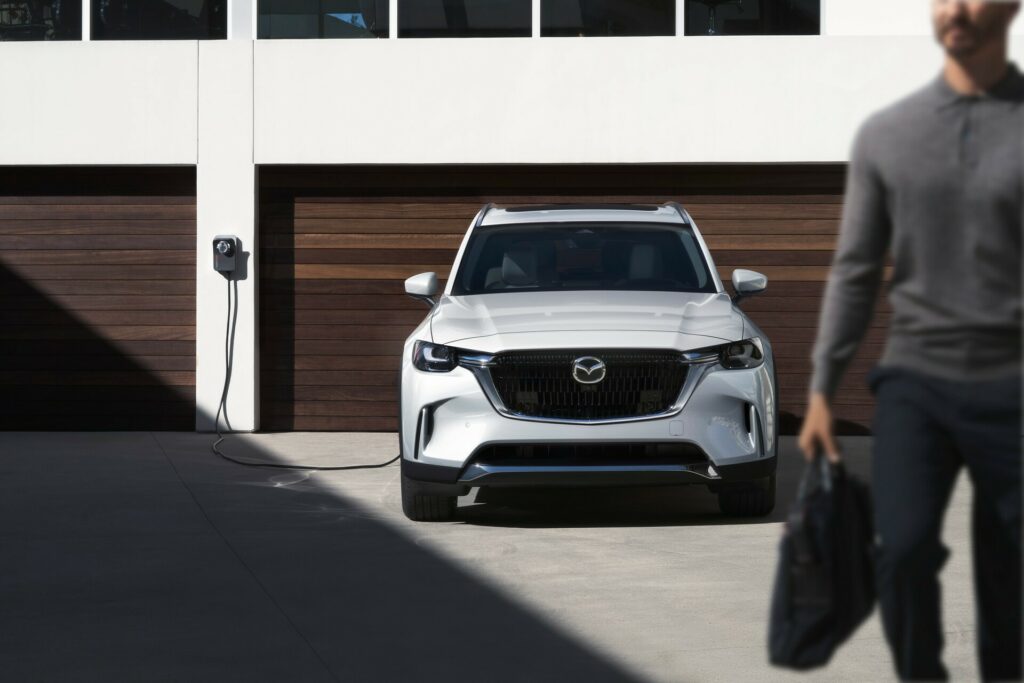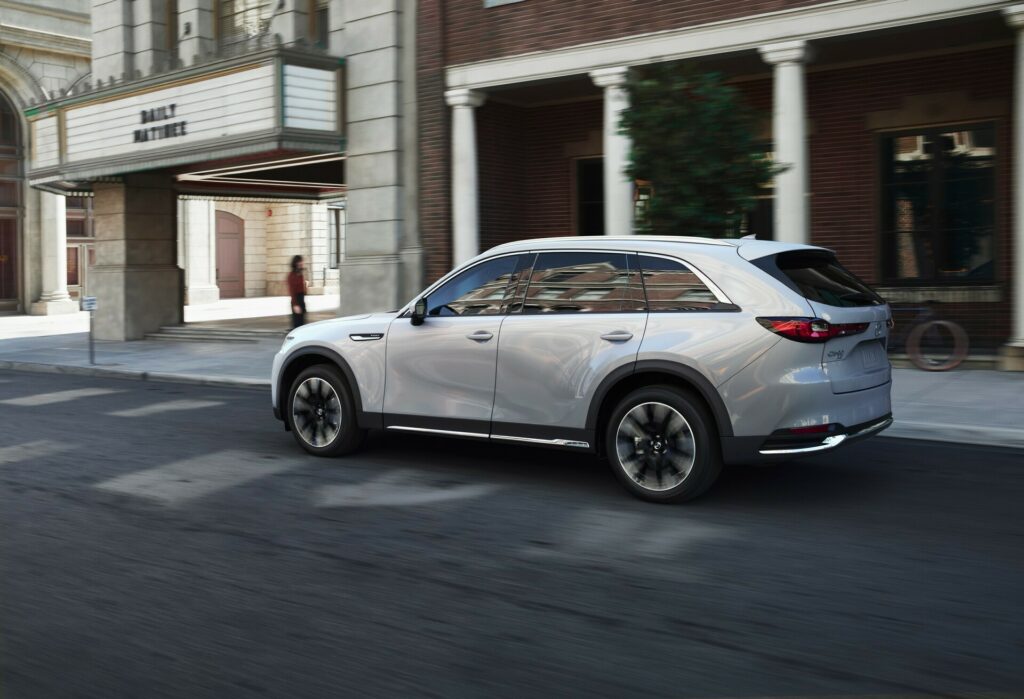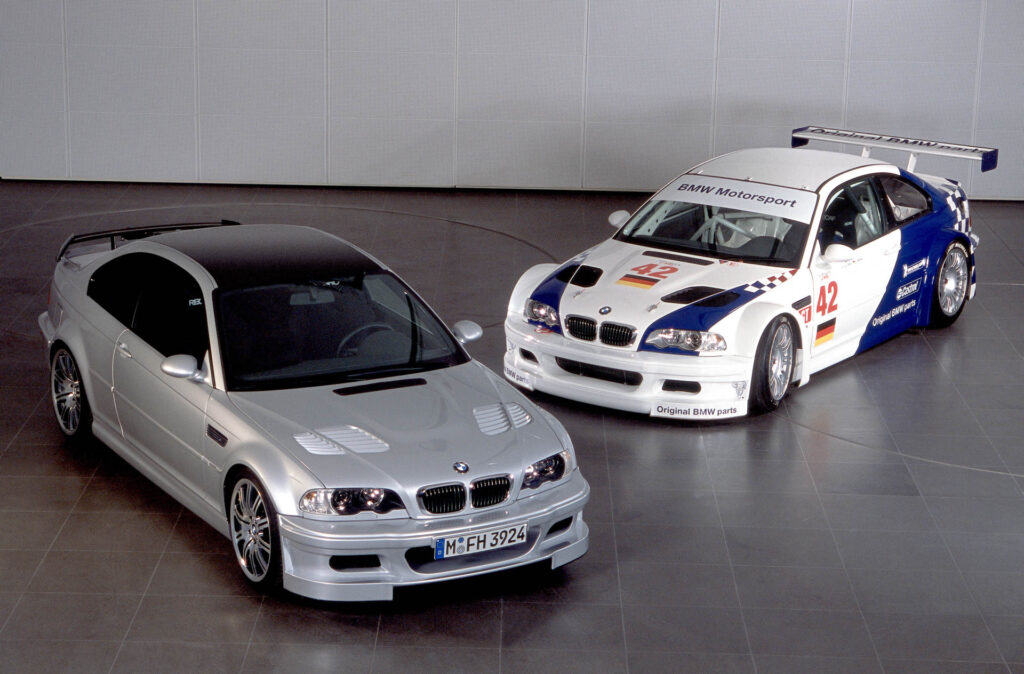Mazda has decided to play ball in the big leagues by introducing an all-new line of SUVs to challenge the Germans’ reign of the premium market. The CX-60, now the biggest Mazda in the UK (at least until the CX-80 arrives later this year), is poised to compete with a wide range of models – from the swanky Audi Q5 and BMW X3 to the ever-popular Toyota RAV4.
| › Model | 2023 Mazda CX-60 Homura |
| › Competition | BMW X3 rival for Europe and Japan (but not U.S.) |
| › Engine | 2.5-liter 4-cyl PHEV, 323 hp (327 PS) |
| › Base price (UK) | £42,990 (RWD diesel) |
| › Price as tested | £48,170 (£52,020 with options) |
What’s Under The Hood?
The Mazda CX-60 is closely related to the seven-seat CX-90 recently launched in the U.S., both using a new longitudinal-engine platform and being offered with four-cylinder PHEV or six-cylinder ICE power.
Review: Mazda CX-60’s Hybrid Drivetrain Spoils Premium SUV Newcomer
We’ve got the PHEV, which is unusual because it’s a not a turbo’d 2.0 but a naturally-aspirated 2.5. It’s assisted by a electric motor stashed inside the eight-speed automatic transmission that is rated at 129 kW (173 hp / 175 PS) and helps make a combined 323 hp (327 PS) and 369 lb-ft (500 Nm) of torque. That enables the CX-60 to hit 62 mph (100 kmh) in 5.8 seconds, while Mazda says the 17.8 kWh battery is good for 39 miles (63 km) of electric driving.
What Options Are Fitted?
advertisement scroll to continue
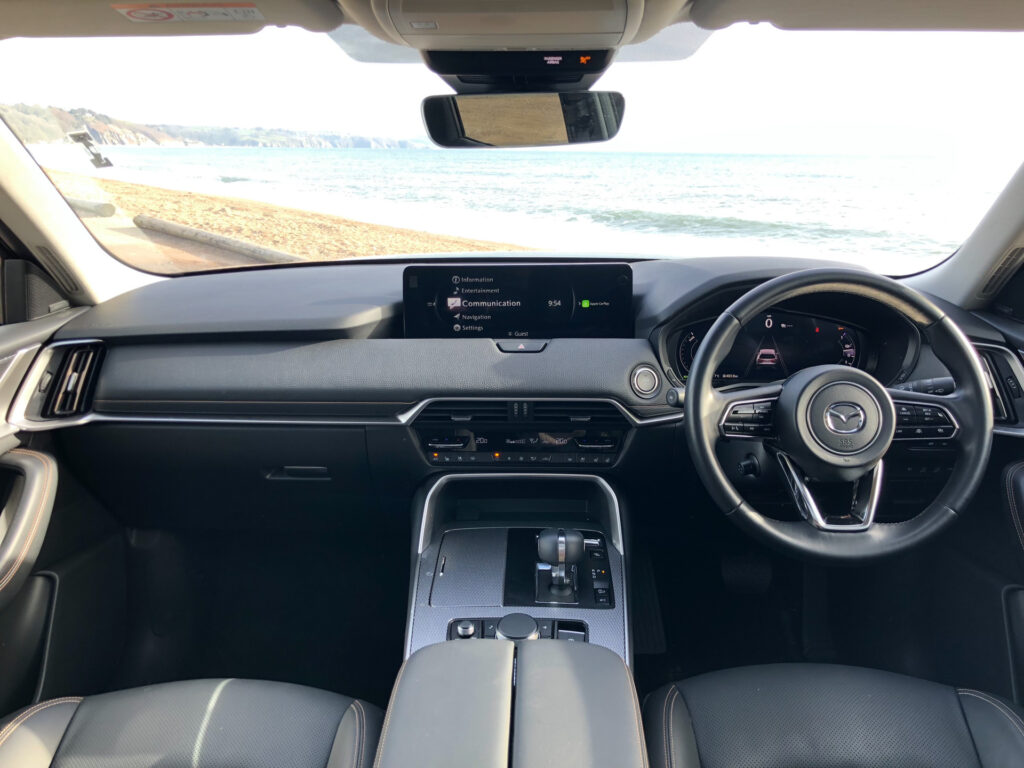
The mid-spec Homura comes standard with 20-in wheels, heat for all four seats and cooling for the fronts, LED lights, a powered tailgate, keyless entry and head-up display.
Our car goes a step further with Machine Grey paint (£750), the Convenience Pack (£1000, 360-degree camera, wireless phone charging, privacy glass), Driver Assistance Pack (£1100, cross traffic alert, adaptive cruise, adaptive LED lights) and £1000 of panoramic sunroof.
| Specs | |
|---|---|
| Dimensions › | 186.8 in. (4,745mm) L x 74.4 in. (1,890mm) W x 66.1 (1,680mm) H |
| Power › | AWD – 323 hp (327 PS / 241 kW) and 369 lb-ft (500 Nm) Torque |
| 0-62mph (100 km/h) › | 5.8 seconds |
| Top Speed › | 124 mph (200 km/h) |
| EV Range › | 39 Miles (63 km) |
| On Sale › | Now in UK, Europe, Australia |
#2 May 6: Digital Instrument Cluster Goes Dark
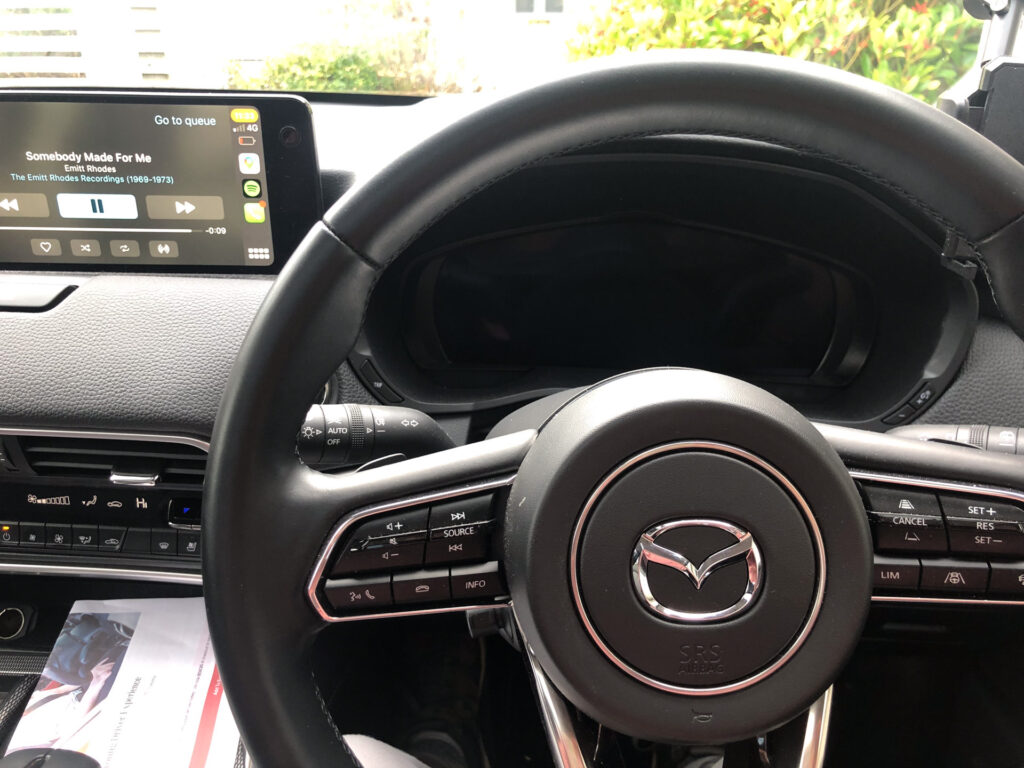
| Total Miles: | 14,068 (22,640 km) |
| Average Fuel Economy: | 30.4 mpg US (36.5 UK) |
I’ve seen into the future and it’s a big black abyss. That’s what I was faced with one morning when I pushed the CX-60’s starter button and peered into the recess where the 12.3-inch digital gauge cluster lives and saw nothing but inky darkness. The main infotainment screen on the dash was still working, and the CX’s hybrid powertrain was still operating normally, but the instrument pack was a no-show.
The Mazda CX-60’s gauge pack, which is the same as the one fitted to the CX-90, is less useful than some rival digital clusters because it can’t be configured in as many ways. But it is the only place on the car where you can see how much petrol and electric charge you have left. I had to resort to checking the My Mazda phone app to see those tallies for the next two days while I waited to see of the problem would right itself, though my car’s optional head-up display did at least show me how fast I was going.
By the end of day two nothing had changed so I added ‘call Mazda dealer’ to my to-do list. But before I had a chance to make that call the CX died altogether. When the breakdown guy arrived he reckoned the fault in the instrument pack had caused an electrical drain that eventually flattened the battery. The main hybrid battery had plenty of charge, but it’s a separate system to the one used to start the car. Recovery man added some charge to the regular battery then started the 2.5-liter hybrid motor, not using the starter button on the dash, but by plugging in his laptop and pressing some keys on the keyboard. Modern cars, eh?
The gauge pack hasn’t failed to report to duty since, but the episode has made the old man in me wonder what’s going to happen when all of these new cars that rely completely on screens for everything start to get old. It’ll never be more than a minor inconvenience for the first owners if they pack up within the first three years, but 10 or 15 years down the line it’s going to be a different story.
#1 April 22: Fuel Economy And EV Range
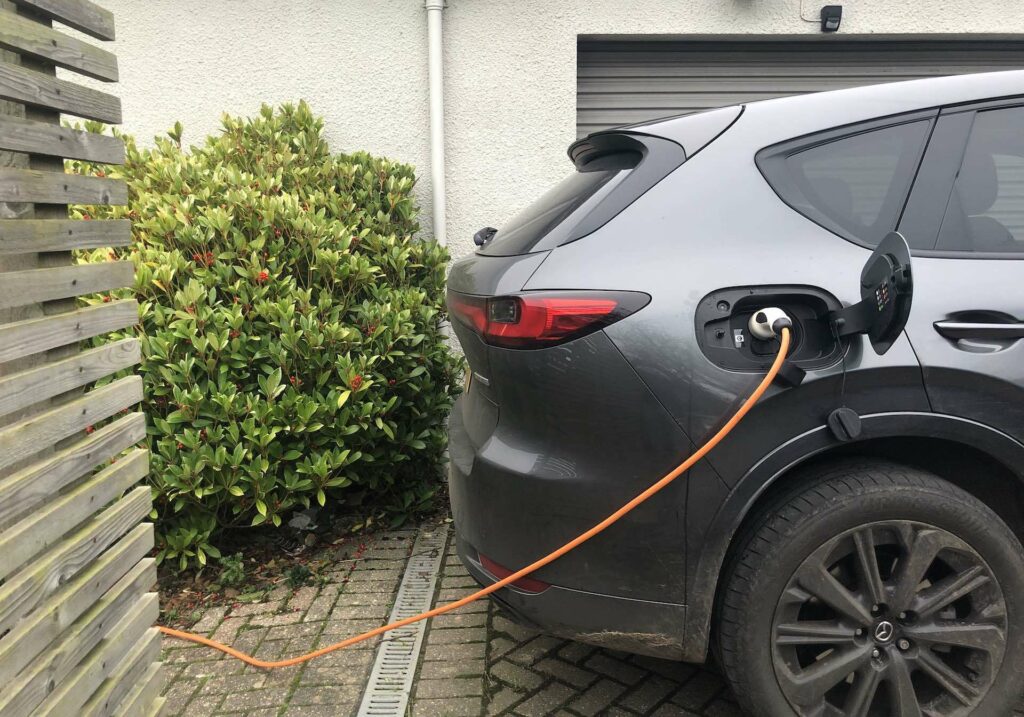
| Total Miles: | 12,005 (19,319 km) |
| Average Fuel Economy: | 29.6 mpg US (35.5 UK) |
I’ve been running this car in the UK for Car Magazine’s long-termer section for the past six months and 11,000 or so miles (17,702 km), which is plenty of time to generate some firm electric range and economy numbers. But of course, being a PHEV, those numbers can vary dramatically depending on where you drive it and whether you remember (or bother) to charge it, which takes 7h 50 from flat using a regular 240-volt UK household socket.
I’ve never matched Mazda’s quoted 39-mile (63 km) electric range, but I have seen 32 (52 km) a few times. Most days, though, the battery seems to be toast in 25 miles (40 km). That’s enough for me to run errands close to the house like dropping kids at school, and means many days the 2.5 ICE motor doesn’t get out of bed, but it doesn’t make much of an impact on a four-hour motorway blast.
On those kinds of long, high-speed drives with the 17.8 kWh of battery energy a distant memory, the economy tends to be around 26-28 mpg (31-33 mpg UK), but a more normal mix of short and long journeys over the course of a month can get the numbers up towards 31-32 mpg (37-38 mpg UK).
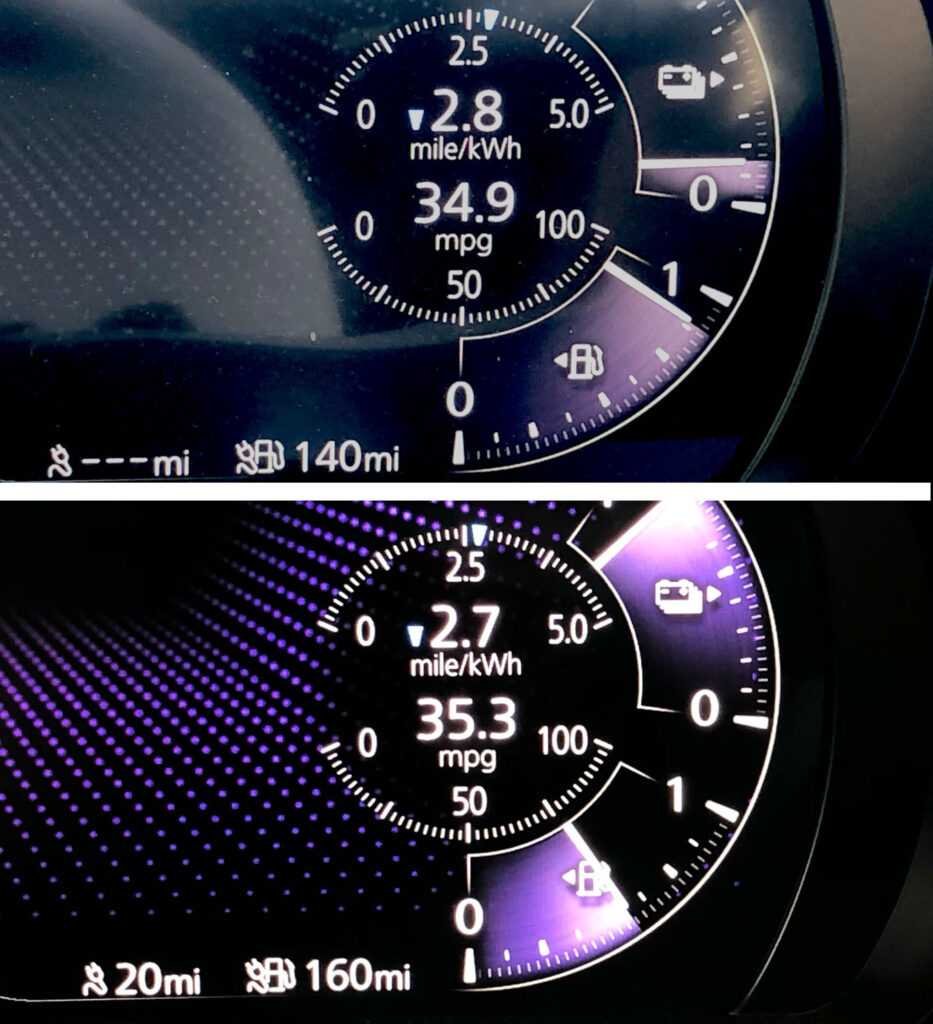
One annoying detail is the fluctuation in the overall petrol/electric driving range and also the fuel level. Just check out the two images above to see what I’m talking about. In the top pic the car shows no usable battery charge, so no electric range, but thinks I can only do 140 miles (225 km) on more than three quarters of a tank of fuel (a full tank is 45 liters or 11.9 gal U.S.). In the lower pic, it claims 20 miles (32 km) of electric range and half a tank of fuel, but estimates the combined petrol-electric range as 160 miles (258 km).
Obviously the range calculations are affected by how you’ve been driving the car, but both of these pictures were snapped in similar situations. We haven’t yet driven the North American CX-90 that uses this same platform and drivetrain, but we imagine it also suffers from the same indecision. Let us know if you’ve driven a CX-90 and can tell us if that’s true.

